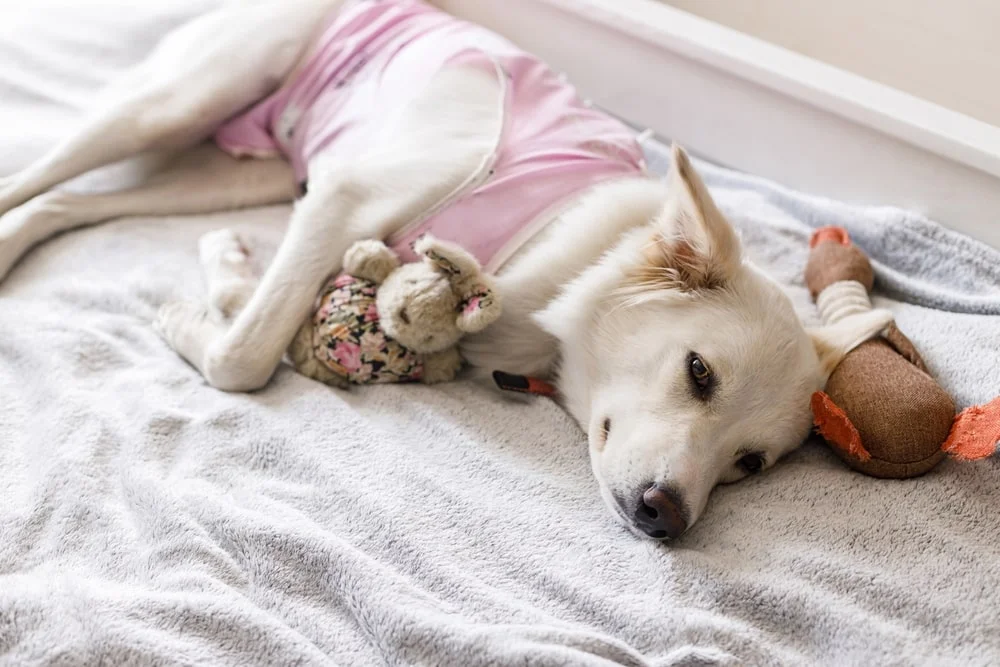PET HEALTH
Spaying or neutering your dog is a common step many pet parents take. Studies have shown that doing so can increase a dog’s lifespan and reduce their likelihood of developing certain cancers.1 But like any surgical procedure, spaying and neutering comes with its own risks. There are complications of spaying a dog that every canine lover should be aware of and learn to recognize.
What To Expect After Spaying or Neutering Your Dog
The process of spaying or neutering typically involves surgically removing a pet’s reproductive organs. For male dogs, this means removing the gonads (an orchiectomy); female dogs can have a complete ovariohysterectomy, which removes their uterus, fallopian tubes, and ovaries, or they can have just the ovaries removed (an ovariectomy).2 Your vet can advise you on which procedure is best for your pup.
Whichever option you go with, expect your pup to need some after-neuter care. Keep them comfortable and in a low-stress environment once they return home, and limit their activity to avoid potentially re-opening the incision.3 Avoid baths or swimming during this time, as moisture could lead to an infection.3
What are the most crucial days after spaying or neutering?
Most dogs will need up to 14 days to fully recover, which is also when the stitches are usually removed.3 During that time, it’s important to pay attention to your dog’s behavior and be on the lookout for signs of complications. Let’s take a look at some of the most common warning signs after spaying or neutering a dog.
Warning Signs To Look For
How do you know if something is wrong after spaying or neutering your dog? There are a number of signs that could indicate complications, be it an infection or internal bleeding.
The incision site should be, at worst, slightly reddened or bruised.3 You may see some fresh blood around the incision within the first 24 hours after the surgery, but don’t panic! It’s perfectly normal — although, it can be exacerbated depending on your dog’s activity level during recovery.3
When should I be concerned about my dog after being spayed or neutered?
Symptoms of internal bleeding after spaying or neutering can include:3
- Periodic blood seepage from the incision lasting more than 24 hours
- Excessive skin irritation (swelling, redness, etc.) around the incision site
- Continuous blood drainage from the incision
If you notice any of these symptoms, bring your dog to the vet as soon as possible. Do the same if you notice an unpleasant odor around the incision and/or a discharge of fluid or pus, as these could indicate a bacterial infection.3
How common are complications after spaying or neutering?
Spaying and neutering are the most common surgical procedures performed by veterinarians. As such, the risk of complications is very low.2 That doesn’t mean they’re non-existent, however. It still helps to be aware of and prepared for the worst-case scenario, even if that scenario is unlikely to happen.
Does Pet Insurance Cover Spaying or Neutering?
The cost of spaying or neutering your dog can be expensive. The average price range is $340 – $1,500, depending on factors like your dog’s age, health, and the presence of conditions that could make the procedure more risky. Your vet should be able to provide you with an estimate before you commit to the procedure.
While many dog insurance plans don’t cover these surgeries, a MetLife Pet Preventative Care plan actually can help cover the cost of the surgery.4 And if anything were to happen post-surgery, it could help cover costs to treat infections and more.5 It can also reimburse you for vaccinations, flea and tick treatments, and annual wellness visits. See if pet insurance is worth it for you, and then get a quote.

